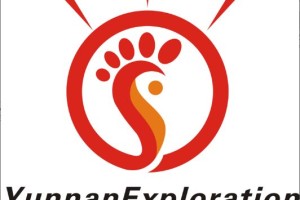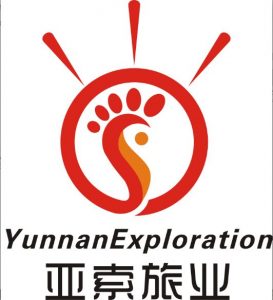
Wang Zhongwen – Inheritor of Zhizha Paper Art in Wenshan City, Wenshan
Wang Zhongwen (王忠文), male, of the Zhuang ethnic group, was born in 1948 in Niutouzhai Village (牛头寨), Kaihua Town (开化镇), Wenshan City (文山市), Wenshan Zhuang and Miao Autonomous Prefecture (文山壮族苗族自治州), Yunnan Province. He is a distinguished folk artist specializing in traditional paper crafting. From a young age, he was fascinated by the local art of Paper Horse Dance and, in adulthood, he taught himself the techniques of paper horse making.
Inheritance and Innovation of Paper Craftsmanship
Wang Zhongwen has not only inherited traditional paper crafting techniques but has also introduced significant innovations. He improved the structure of the paper horses by using bamboo for the framework, reinforcing them with durable materials, and adorning the horse bodies with colorful velvet fabrics. Decorative elements like beads, silk threads, and bells further enhance the aesthetic appeal and durability of his creations. These improved paper horses are greatly appreciated by the local Zhuang community and are widely used in Paper Horse Dance performances.

Paper Horse Dance and Paper Craftsmanship
The Paper Horse Dance (纸马舞) is a traditional folk dance of Kaihua Town (开化镇), Wenshan City (文山市). Performers wear paper horse structures during the dance and mimic various horse-like movements. The creation of these paper horses integrates the folk arts of binding, mounting, and painting. With their rustic yet vivid designs, they possess a strong folk aesthetic. Wang Zhongwen’s paper horses are well-loved locally and have even attracted visitors from other regions interested in viewing and purchasing his works.
Social Impact and Honors
Wang Zhongwen’s paper crafting skills have gained local recognition and prestige. In 2003, Wenshan TV interviewed and featured him. In 2004, he showcased his paper horse creations to both domestic and international scholars at the International Bronze Drum Symposium held in Wenshan. As the only folk artist in Wenshan County (文山县) still capable of making traditional paper horses, Wang Zhongwen has made a vital contribution to the protection and inheritance of this intangible cultural heritage.
Wang Zhongwen’s craftsmanship is not only a significant part of Zhuang cultural heritage but also a treasured component of China’s intangible cultural legacy. His dedicated efforts have ensured the continued survival and development of this traditional art in contemporary society.
Cultural Significance of the Paper Horse Dance in Zhuang Culture
Ancestor Worship and Ritual Traditions
The Paper Horse Dance is a powerful expression of ancestor worship in Zhuang culture and reflects ancient funeral and ritual practices. Traditionally performed during funerals and rituals, it is believed to help guide spirits, appease ancestors, and ward off evil. By imitating horse behaviors through dance, the Zhuang people express reverence for their ancestors and mourn the loss of loved ones.
Historical Memory and Ethnic Spirit
The dance embodies the historical memory and ethnic spirit of the Zhuang people. One legend links its origin to the ancestors who followed a General riding a white horse. After getting lost on their return journey, they remained in the area and created the dance to honor the general. Another tale tells of local women, led by Wang Sanjie (王三姐), who dressed in paper horse costumes and staged military drills to scare off invading enemies while the village men were away at war. These stories highlight the wisdom, courage, unity, and resilience of the Zhuang people in times of hardship.
Social Cohesion and Cultural Transmission
The Paper Horse Dance is a collective and entertaining dance that fosters social cohesion. It is performed not only in rituals but also during weddings, festivals, guest receptions, and for personal enjoyment. By participating in the dance, the Zhuang people strengthen community bonds and pass down their cultural traditions. Today, the dance has evolved into a large-scale group performance involving over a hundred participants, attracting people of all ages.
Artistic Value and Cultural Diversity
The Paper Horse Dance is rich in artistic value and cultural diversity. Its performance includes a variety of movements such as marching, playing, running, fighting, leaping, and neighing, all performed with lively, rhythmic energy. The dance vividly portrays the spirit and motion of horses in a primitive yet expressive style. The props are also a form of art: paper horses are crafted using bamboo strips for the frame, pasted with paper, painted with facial features, and decorated with velvet fabric, beads, flower petals, and bells.
Educational and Entertainment Functions
Besides being a form of artistic expression, the Paper Horse Dance serves educational and entertainment purposes. It conveys the history, culture, and values of the Zhuang people to younger generations through engaging performance. It also provides a joyful and enriching recreational outlet, enhancing the cultural life of the community.
As an essential aspect of Zhuang culture, the Paper Horse Dance reflects the community’s lifestyle and worldview. Its preservation and continued performance in modern society help strengthen ethnic identity, promote cultural heritage, and inspire pride and cohesion among the Zhuang people.
For Chinese version please go to:
http://www.ynich.cn/view-ml-13111-3304.html

 7 Days GolfingTour
7 Days GolfingTour
 8 Days Group Tour
8 Days Group Tour
 8 Days Yunnan Tour
8 Days Yunnan Tour
 7 Days Shangri La Hiking
7 Days Shangri La Hiking
 11 Days Yunnan Tour
11 Days Yunnan Tour
 6 Days Yuanyang Terraces
6 Days Yuanyang Terraces
 11 Days Yunnan Tour
11 Days Yunnan Tour
 8 Days South Yunnan
8 Days South Yunnan
 7 Days Tea Tour
7 Days Tea Tour
 8 Days Muslim Tour
8 Days Muslim Tour
 12 Days Self-Driving
12 Days Self-Driving
 4 Days Haba Climbing
4 Days Haba Climbing
 Tiger Leaping Gorge
Tiger Leaping Gorge
 Stone Forest
Stone Forest
 Yunnan-Tibet
Yunnan-Tibet
 Hani Rice Terraces
Hani Rice Terraces
 Kunming
Kunming
 Lijiang
Lijiang
 Shangri-la
Shangri-la
 Dali
Dali
 XishuangBanna
XishuangBanna
 Honghe
Honghe
 Kunming
Kunming
 Lijiang
Lijiang
 Shangri-la
Shangri-la
 Yuanyang Rice Terraces
Yuanyang Rice Terraces
 Nujiang
Nujiang
 XishuangBanna
XishuangBanna
 Spring City Golf
Spring City Golf
 Snow Mountain Golf
Snow Mountain Golf
 Stone Mountain Golf
Stone Mountain Golf



